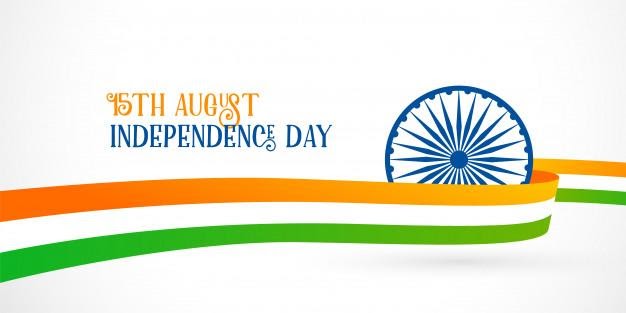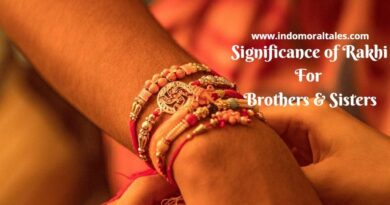Essay on independence day of India
“From tomorrow, we shall be delivered from the bondage of the British rule. But from midnight today, India will be partitioned too. While, therefore, tomorrow will be a day of rejoicing, it will be a day of sorrow as well. It will throw a heavy burden of responsibility upon us. Let us pray to God that He may give us strength to bear it.” – Words of Mohandas Karamchand Gandhi, on the eve of Indian Independence
Here we present an Independence Day essay that teaches children why we celebrate Independence Day, how we should celebrate Independence Day, why Indians want independence, the main events in the Indian Independence movement, and what our independence teaches us, along with various other concepts related to Indian independence.
Quick Navigation
What is Independence Day?
Indian Independence Day was a day when the dreams of national leaders, freedom fighters, and millions of people suffering under British rule were realized. It is the day when India attained its complete freedom from the hands of the Britishers. From this day – Aug 15th, 1947 onwards, India became an independent country.

What is the meaning of an independent country?
A country is said to be independent if it is not ruled by any other country. An independent country will have its government formed internally by its citizens, not influenced by any other countries. It can draft its own rules, policies, and regulations for the welfare of its people and the country’s growth.

How did the British land in India?
India was a rich country, blessed with a variety of natural resources and skilled human power capable of doing many tasks that the external world could never imagine. The country flourished under its kings who worked immensely for protecting its heritage and culture. The country is home to diamonds and gold. It has contributed great wealth to the world in the form of many books and scriptures on science, health, math, healing, yoga, Ayurveda, economics, politics, and many other subjects. Facts about India for kids
India was a country that was advanced compared to many other countries, even Britain in those times. But how Britain captured the power to rule India proves to us what happens when cunningness mingles with economic power.
When Vasco da Gama, a Portuguese explorer discovered the sea route to India via Calicut on May 20, 1498, Indian rulers and people did not imagine that this discovery would push the country into foreign rule for 200 years.
Europeans were first drawn towards India’s rich variety of spices, and opium. In 1599, the British East India Company was formed under the charter granted by Queen Elizabeth. According to this, the British could do business with Asian nations including India.
They wanted to get hold of the Indian trade circuit. They made commerce arrangements with the rulers of various kingdoms in India for this reason. But slowly, the British were drawn towards the massive wealth of India. They were in no mood to leave the country’s wealth and richness unexploited. They started creating differences among Indian kings and rulers to break their unity.
The British always believed in Divide and Rule policy. They implemented this with Indian rulers luring them with money and power. They succeeded in creating misunderstandings among the then Indian rulers and finally, could get hold of the Indian trade and commerce.
Unable to leave Indian wealth unexplored, the Britishers believed that getting hold of this rich subcontinent is the way to exploit it fully. They decided to get hold of the political power over India.
In the same period, around the 18th century, the Mughal empire started to decline in India. After the Battle of Plassey, the British gained a stronghold in the Indian political arena. The East India Company established its rule. They introduced English as the medium in schools in 1835. This paved the way for the introduction of Western Culture in India.
Top Leadership Qualities for Students
Important events in the Indian independence movement
Before the actual independence struggle, there were many rebellions in India on a small scale. Though they could not create nationwide awareness about freeing India, their impact is huge. Some of the important events in the Indian independence movement are as below:
Rebellion by Maveeran Alagumuthu Kone: Maveeran Alagumuthu Kone is one of the earliest freedom fighters of India. He laid the foundation for the Indian freedom fight. However, his forces named Marudhanayagam forces were defeated at the hands of British forces. He was then executed in 1757.
Resistance from Mysore Kings: The wars between Mysore Kings and the British rulers (in the name of Madras Presidency) are significant. They happened for a period of over 30 years at regular gaps. The Mysore rulers gave stiff competition to the British, however, they were caught and the Mysore presidency was taken over by the British in 1805.
In 1776, the British captured the Telangana province from the Nizams. Odisha went into British rule around 1768. The fight of Rani Velu Nachiyar, the queen of Shivaganga, Karnataka lives in history forever. She was a brave warrior and fought the British and continued to rule the kingdom for a decade more.
Later follows the heroic stories of Veerapandya Katta Bommana and Tipu Sultan. Both gave intense competition to the British, however, sacrificed their lives in the end. Battle of Chandawar Essay
Why did Indians want independence from the British?
British dragged away all the provinces from Indian rulers either by hook or crook. They then started their atrocities to an extreme level that turned no more acceptable to Indians. Some of the many incidents that Britishers created rage in Indians by willingly hurting their race, sentiments, culture, and traditions are as below:
In September 1804, the king of Kalinga ( now Odisha) received a message from the British rulers mentioning that he had no more rights in the Puri Jagannath Temple. At the same time, the Raj Guru of Odisha Kings was murdered by the British. This is one of the biggest cultural shocks that triggered the immediate need for Indian independence by the Odisha kings.
It was in 1857, that Indian sepoys who were working in the British army realized how badly they were being treated by the British. They were paid low compared to British sepoys, constantly abused and treated unwell based on their color and language, and some attempts were also made to convert Indian sepoys to Christianity. All these raised a deep spirit of protest in the Indian sepoys working in the then-British army.
Backed by their rising power in India, the British started removing Mughal successors and important family members of Mughal rulers from their forts. They also started the abolishment of princely existence under the Doctrine of Lapse.
The major trigger for the rebellion, however, started in 1857. The Indian sepoys in the British army were using the Pattern 1853 Rifle Cartridges. The edges of these rifles were believed to be smeared with the fat of cows and pigs. The soldiers had to remove these edges or the caps with their teeth before they could use this. This forceful act that was related to the cow and pig irrevocably hurt the sentiments of both Hindus and Muslims in the army.
It was at the same time that the brave soldier Mangal Pandey stood up against the British over this cause. He inspired many other soldiers in the army to fight against the British rulers. The sepoy mutinies continued in various provinces including West Bengal, Awadh, and many places including Gwalior where Rani Lakshmi Bai was killed. All these created a loss of power to British East India, which had to hand over the power to the British government according to the Government of India Act 1858.
Then the British government was formed in India under the leadership of the Viceroy. He was also called the Governor-General of India. During this transfer of power, the British Queen, Queen Victoria promised that Indians will receive equal respect and status in all government positions and other aspects. However, in the later years, the British did not stand to this promise. The unequal treatment given to Indians in high positions also was a cause for the demand for Indian independence. 15+ Ideas to Celebrate Republic Day in School
Henceforth, the Britishers stopped outrageous activities that hurt Indian sentiments. They started enrolling officials into the highest positions of the Government through Civil Services. But, at the same time, in a controversial move, Prime Minister Benjamin Disraeli, presented the title Empress of India to Queen Victoria, which was against the British Traditions.
Ever since 1867, organized movements were started in India under the leadership of various national leaders.
- East India Association in 1867 by Dadabhai Naoroji
- Indian National Association in 1876 by Surendranath Banerjee
- A group of leaders formed the Indian National Congress in 1885
Parallelly, the influence of various nationalistic groups and leaders created a tremendous impact in raising awareness about India’s greatest heritage, culture, and the importance of freedom. Some of such groups and greatest leaders include:
- Arya Samaj, by Swami Dayanand Saraswati
- Brahmo Samaj, by Raja Ram Mohan Roy
- Swami Vivekananda
- Shri Ramakrishna
- Sri Aurobindo
- V. O. Chidambaram Pillai
- Subramanya Bharathy
- Bankim Chandra Chatterjee
- Rabindranath Tagore
- Dadabhai Naoroji
- Sister Nivedita
However, India’s Muslims had diversity which made it tough for many Muslim leaders to bring them onto a single stage. Sir Syed Ahmed Khan successfully brought together all the Muslims of India. He was also the founder of Aligarh Muslim University.
Swaraj, the concept of Indian freedom was first raised by Shri Bal Gangadhar Tilak. It was his notion – Swaraj is my birthright, that deepened the thoughts of millions of Indians to fight for their freedom. Later followed the splitting of the Indian National Congress due to many reasons.
Alongside, the Muslim leaders wanted a separate party and this triggered a sense of “a nation within a nation” spirit. In 1913, Sikhs, Hindus, and Muslims recognized the need to fight with unity to drive away the British from India. The All-India Conference of Indian Christians (AICIC) also played an important role in raising the spirit of Swaraj and opposed the bifurcation of India based on religion.
The Bifurcation of Bengal and many conspiracies that followed have had their share in promoting nationalism in India. However, it was the return of Mahatma Gandhi from England that paved the way for the united spirit among all the nationalists. Some of the critical incidents that happened during this stage are:
- Gandhi returned to India on 9 January 1915
- The passing of the Rowlatt Act in 1919
- The Jallianwala Bagh Massacre on 13 April 1919
- First non-co-operation movement from 1920 to 1922
- Gandhi set up Sabarmati Ashram in Ahmedabad after his return from prison
Later, in May 1928, the Indian National Congress’s session at Kolkata requested the British to accord dominion status to India before December 1929. Or else, the session warned for another Civil Disobedience Movement. In February 1929, Jawaharlal organized the Lahore session and it was decided that 26 January 1930 should be observed all over India as the Purna Swaraj (complete self-rule) Day.
In 1931, the Gandhi-Irwin pact was signed, according to which the Britishers freed all the political prisoners they arrested to date. Despite all these, the conflicts between the Indian National Congress and the Muslim League continued. The next revolutionary movements kept occurring all over India every often.
However, the next major steps towards Indian independence freedom included the raise of the Gandhian Movement, the efforts of Lal Bahadur Shastri, the military approach followed by Subhash Chandra Bose, and many other national freedom fighters of India.
The Quit India Movement in 1942 was another major step towards bringing Indians to one platform to win freedom for their Motherland. It was Mahatma Gandhi’s slogan “Do or Die” that inspired every Indian towards bringing out the hidden patriot.
The Second World War also contributed to India’s independence. The Indian soldiers offered their support to Britain in the 2nd World War. And in return, the force of Britain was so heavy from the Indian freedom fighters to emancipate this country from their rule. Meanwhile, there was an increasing push from Muslims for a separate nation. The British government could not handle all these pressures.
It was on the midnight of August 15th, 1947 that India obtained its Independence. One day before, on Aug 14th, 1947, Pakistan was separated from India. Millions of people lost their lives in the Indian freedom struggle as well as in the communal riots during and after the bifurcation of India.
Sardar Vallabh Bhai Patel, Maulana Abul Kalam Azad, Pingali Venkaiah, Subodh Roy, and Tanguturi Prakasam are some of the hundreds of Indian National Leaders who contributed to Indian Independence.
Lessons to learn from Indian Freedom Struggle
Indian history is endowed with world prominent leaders who have metamorphosed the state of the country from utter slavery to independence. With their leadership acumen, moral discipline, and high principles, such world leaders are the trailblazers in making India self-reliant and self-sufficient. They ingrained in us a whole new outlook to revere our country as well as our countrymen for all generations to come.
The country faced innumerable predicaments in its history which, otherwise would have entirely devastated it, if such strong-willed leaders were not at the forefront.
The freedom struggle of India was an enduring fight for independence that could never have been successful without the relentless and integrated efforts of our national leaders and countrymen. The sacrifice and bloodshed of our freedom fighters have left a deep imprint on the pages of Indian history.
How should we celebrate Independence Day?
Celebrate Independence Day by hoisting the flag in your locality, saluting it with deep love and respect. Shower your tributes to the national leaders and recollect their sacrifices. Organize food donation camps and distribute sweets, food, clothing, and essentials to the poor. Share the greatness of India and the Indian leaders with your kids. Watch movies related to Indian independence and learn from them.

India won Independence after a century-long fight. Millions of people sacrificed their lives to make this country a free land. The journey of the Indian Independence struggle is one such and never to be repeated in the historical events which we should always remember and pass on to the next generations. The independence that we enjoy today is their gift. If we can remember every movement, and be responsible citizens, their sacrifices will serve the purpose.
Jai Hind!! Vandemataram!!!




